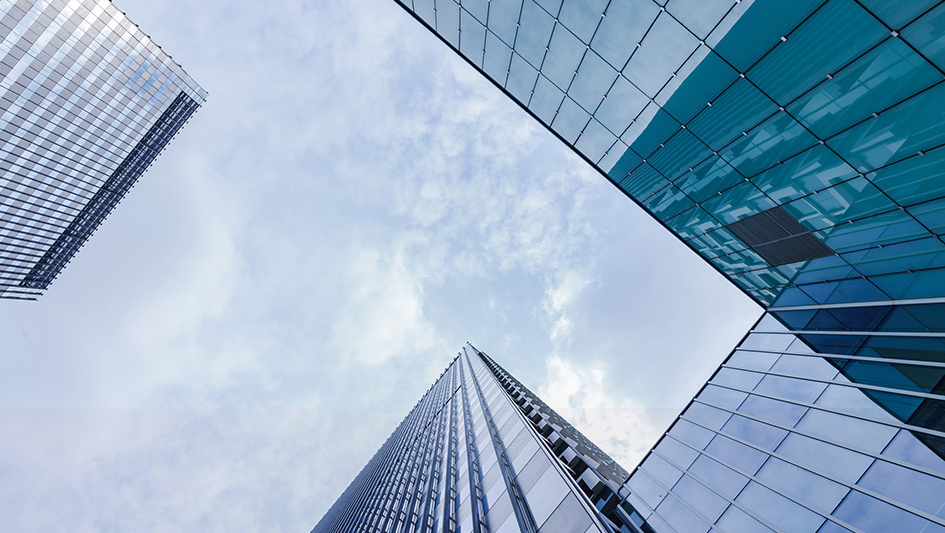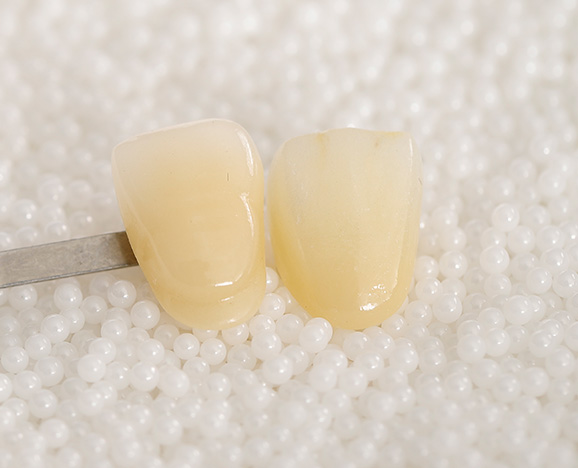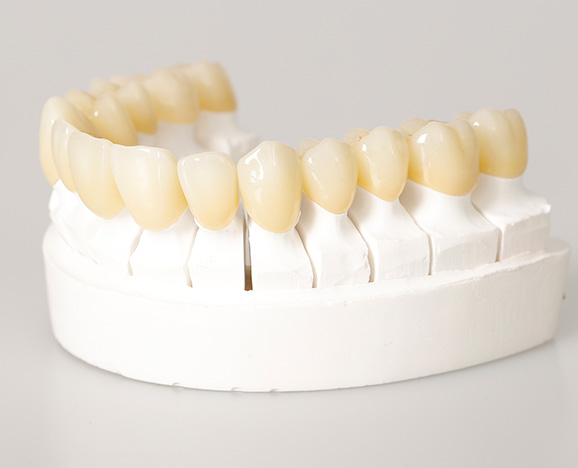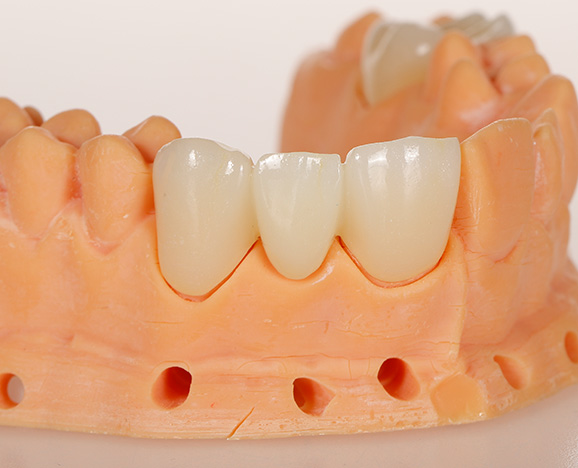Classification and clinical application of oral ceramics and ceramic like restorative materials
Ceramic materials have been used as oral restoration materials for over 200
years. Since Land produced a feldspar all ceramic crown in 1886, all ceramic
materials have gradually become a research hotspot. Since the 1960s, scholars
have successively added garnet and alumina to feldspar ceramics, improving the
mechanical and physical properties of all ceramic materials. In the early 1990s,
zirconia ceramics were introduced into the field of dentistry. Due to their
excellent flexural strength and fracture toughness, they were quickly applied in
various fields, including post core crowns, implants and abutments, orthodontic
brackets, fixed bridge brackets, etc. Oral ceramic materials have excellent color stability, wear resistance,
biocompatibility, as well as excellent optical properties and aesthetics, and
occupy an increasingly important position in clinical dental restoration. At the
same time, a large number of all ceramic products have emerged on the market,
including ceramic like materials launched in recent years. The numerous
materials and brands often cause confusion for clinical doctors in their
choices. This article categorizes the current mainstream oral ceramics and
ceramic like restorative materials based on their microstructure, and provides a
review from the aspects of material properties, main products, clinical
indications, surface treatment, and bonding. The aim is to elucidate their
clinical applications, help clinical doctors understand the characteristics of
different ceramic ceramics and ceramic like materials, and make reasonable
choices. 1、 Classification of all ceramic materials All ceramic materials are usually composed of two or more phases. According
to the different contents of glass phase and crystal phase in the microstructure
of ceramic materials, all ceramic materials can be divided into three
categories: ① feldspar ceramics mainly composed of glass phase; ② Glass ceramics
containing both glass and crystal phases; ③ Polycrystalline ceramics without
glass phase. 1. Feldspar porcelain Feldspar porcelain is a type of amorphous glass made by high-temperature
sintering of natural feldspar, quartz, and kaolin. Feldspar porcelain is a
ceramic material that has long been used in dentistry, and its optical
properties are very close to enamel and dentin. However, due to its poor
mechanical performance, the flexural strength is usually only 60-70MPa, so it is
commonly used as a porcelain fused to metal restoration (PFMS), fused to ceramic
restoration (PFCS), or veneer. 2. Glass ceramics Glass ceramics, also known as microcrystalline glass, are a type of
composite material made by high-temperature melting, forming, and heat treatment
that combines crystal phases with glass. Compared with amorphous glass, the
addition or growth of crystal fillers in the glass phase significantly changes
the mechanical and optical properties of glass based ceramics, such as
increasing the coefficient of thermal expansion and toughness, and changing the
color, milkiness, and transparency of the material. According to the different
crystal composition, there are several types of glass ceramics commonly used in
clinical practice. Leucite reinforced glass ceramics: Leucite (mass fraction
35%~55%) is used as a reinforcing phase in all ceramic materials. Due to its
aesthetic similarity to feldspar ceramics, its strength is improved (flexural
strength can reach 120-180MPa), and it is more conducive to resin bonding,
making it more widely used. Although clinical studies have shown that the fracture rate of garnet
reinforced glass ceramics is relatively low, the success rate of using it for
posterior teeth is significantly lower than that for anterior teeth. Therefore,
it is mainly used for single crown restoration with inlays, high inlays,
veneers, and anterior teeth. Lithium disilicate glass ceramic: SiO2 Li2O glass
ceramic has a high crystal phase content (about 70%), so its flexural strength
can reach over 300-400 MPa. Although the crystal phase content is high, the
transparency of the material is still high due to the low refractive index of
lithium disilicate. It can be directly used as an all ceramic restoration or
decorated with fluoroapatite glass ceramics on its surface. Except for IPSEpress2, which has lower strength, all other products can be
used for three unit fixed bridges with veneer, inlay, high inlay, anterior and
posterior single crown, and anterior/premolar area. However, as a fixed bridge,
its clinical success rate significantly decreases, mainly due to the fracture at
the connection of the fixed bridge. In recent years, improved materials based on
this material have begun to emerge. Vita Supernity (VITA) is a zirconia
reinforced lithium silicate glass ceramic (ZLS) formed by CAD/CAM in 2013. By
using a special process to add zirconia (about 10% specific gravity) to glass
ceramics, compared with traditional lithium disilicate glass ceramics, it not
only improves the flexural strength (494.5 MPa), but also has good transparency,
fluorescence, milky effect, and higher edge stability and accuracy. Moreover,
studies have shown that the adhesive strength of ZLS is stronger than that of
traditional lithium disilicate glass ceramics. Fluorapatite glass ceramics: Glass ceramics containing fluoroapatite
crystals [Ca5 (PO4) 3F] are similar to hydroxyapatite crystals in enamel, thus
improving the optical properties and thermal expansion coefficient of
traditional feldspar ceramics. They are commonly used as decorative ceramics for
metal scaffolds, lithium disilicate glass ceramics, and zirconia crowns. In Ceram glass infiltrated ceramics: Currently, glass infiltrated ceramics
specifically refer to the In Ceram series. In CeramAlumina is an all ceramic
system that can be used for single crown and three unit fixed bridge restoration
of anterior teeth, with moderate strength (350-450MPa) and transparency. The
second generation product, In Ceram Spinel, has increased transparency but
decreased strength and is only used for making front dental crowns. In Ceram
Zirconia added 35% partially stabilized zirconia, achieving a flexural strength
of over 650MPa but almost opaque, making it mainly used for single crowns and
three unit fixed bridges in posterior teeth. Although the In Ceram series has a
high clinical success rate, its clinical use has gradually decreased with the
development of zirconia and other new materials in recent years. 3. Polycrystalline ceramics Polycrystalline ceramics are dense ceramic materials that are directly
fired from crystals and do not contain glass or gas phases. They have high
strength and hardness and are processed using CAD/CAM equipment. This type of
material, due to the lack of glass phase, usually has low transparency and needs
to be decorated with decorative ceramics, including alumina and zirconia.
Procera All Ceram (Nobel Biocare) is a polycrystalline ceramic early used in the
dental field, containing 99% to 99.5% high-purity dense alumina ceramics, with a
strength of approximately 600Mpa, second only to zirconia ceramics. However, due
to its high elastic modulus, it is prone to material fragmentation, so its
clinical use has gradually been replaced by zirconia. The zirconia used for
dental materials is tetragonal zirconia polycrystalline (Y-TZP) stabilized with
yttrium oxide. It has excellent stability, wear resistance, and
biocompatibility, with a flexural strength of 900-1200Mpa and a fracture
toughness of 9-10MPa/m1/2, which is twice that of dense alumina and three times
that of lithium disilicate glass ceramics. It is commonly used for posterior
crown and multi unit fixed bridge repairs. The main reason for the failure of zirconia restoration in clinical
practice is the cracking of decorative porcelain. Although processing methods
that slow down heating and cooling rates can improve the rate of ceramic
failure, there are currently few clinical literature reports on such methods.
Compared with traditional zirconia crown with decorative porcelain, all zirconia
restorations have the following advantages: ① No need for decorative porcelain,
avoiding porcelain collapse, and achieving significant results in fixed bridge
restoration for posterior teeth. Ramos et al.'s in vitro fatigue tests showed
that under continuous action of the piston (100N, 3Hz) × After 106 cycles, the
failure rate of all zirconia restorations is much lower than that of traditional
zirconia A smaller amount of tooth preparation preserves more dental tissue,
making it suitable for cases with insufficient facial space. Taking the all
zirconia restoration VitaYZT (VITA) as an example, its posterior teeth have a
full crown reserve of face ≥ 0.7mm, adjacent face ≥ 0.5mm, and shoulder ≥ 0.2mm,
which is much smaller than the traditional zirconia plus porcelain full crown
reserve (face ≥ 1.4mm, adjacent face ≥ 1.2mm, shoulder ≥ 0.5mm) With the
development of materials, new types of high permeability all zirconia
restorations continue to emerge, improving the transparency of zirconia
materials. As introduced in 2014, PRETTUANTERIOR (Zirkonzahn) has the same
transparency as lithium disilicate glass ceramics, and its strength is much
higher than that of glass ceramics (>670MPa), which can greatly replace glass
ceramics as an aesthetic restoration for anterior teeth Less wear on natural
teeth in the opposite jaw. Studies have shown that although the hardness of
zirconia is much higher than that of glass ceramics, highly polished all
zirconia restorations have a lower degree of wear on natural teeth in the
opposite jaw compared to glass ceramics. 3M Monolith and 3M Translucent (3MESPE)
can also be used for patients with night molars (single crown or three unit
fixed bridge). Although all zirconia restorations have many advantages, due to
the lack of decorative porcelain, zirconia materials have low-temperature aging
phenomenon when used in hydrothermal environments for a long time. The impact of
whether the surface of the restorations is highly polished in clinical
operations on friction performance and the strength reduction brought about by
aesthetic performance improvement still require long-term clinical practice to
confirm and improve. 2、 Resin ceramic composite materials/ceramic like materials With the continuous development of aesthetic restoration, new types of
glass ceramics and polycrystalline ceramics are constantly emerging, but these
materials usually require a time-consuming heat treatment process before
clinical application. Moreover, the elastic modulus of materials currently used
for repairing dental defects is much lower than (polymer composite materials) or
much higher than (ceramic materials) the elastic modulus of enamel and dentin.
Therefore, in recent years, a new type of CAD/CAM resin ceramic composite
material has begun to appear in the market, which is highly filled with ceramic
particles (>50% weight) in organic scaffolds. Some scholars believe that
according to the definition of ceramics in the 2013 ADA Dental Regulations and
Naming Rules, composite materials composed mainly of ceramic materials and
supplemented by organic polymers can be classified as ceramic materials.
However, there is still controversy surrounding this issue internationally.
Therefore, this article will separately introduce this type of material as a
type of ceramic material. Compared with traditional ceramic materials, it has special properties due
to the presence of organic scaffolds, which have the following advantages: ①
closer elastic modulus to dentin; ② Reduced the brittleness and hardness of the
material, making it easier to cut; ③ More convenient to use resin for repair; ④
After adjustment, it does not affect the intensity and is easy to operate
clinically; ⑤ The wear on natural teeth is much smaller than that on glass
ceramics; ⑥ No heat treatment is required, and its design and production can be
completed next to the chair. VitaEnamic (VITA), launched in 2013, is a resin
ceramic composite material in the world, consisting of a dual network structure
of 86% weight feldspar glass ceramic and resin polymer. Its strength is about
150-160MPa, and its elastic modulus is about 30GPa, very close to dentin. Some
scholars classify it as glass infiltrated ceramics. Compared with traditional
dental ceramic materials, its toughness and elasticity are enhanced, and its
wear resistance, strength, and color change resistance are superior to existing
resin materials. The degree of wear is similar to that of natural enamel.
Simultaneously possessing high transparency, it can effectively complete the
aesthetic restoration of front teeth. In addition, the machinability and edge
stability of the material are superior to other CAD/CAM ceramics. Its small
tooth preparation amount is also smaller than that of glass ceramics, making it
suitable for veneers, inlays, high inlays, single crowns, and minimally invasive
restorations, such as in cases where the preparation amount is significantly
insufficient and the repair space is very limited. Lava Ultimate (3MESPE) is a resin nanoceramic formed by filling
approximately 80% weight of SiO2, ZrO2, and polymer SiO2/ZrO2 nanoceramic
fillers in processed resin scaffolds. It has good aesthetic performance and
durability, with a high strength of 200Mpa, and can be used as a restoration for
posterior teeth. In clinical application, due to the possibility of debonding as
a single crown, its application is limited compared to VitaEnamic. It is only
used for inlays, high inlays, and veneers, and the preparation of teeth for
inlays and high inlays must ensure maximum internal fixation design. At present, this type of material still has some defects, such as inferior
wear resistance and light transmittance compared to glass ceramics, and research
is still limited to in vitro experiments, with limited clinical literature
reporting. 3、 Surface treatment and bonding In clinical practice, a very important factor affecting the indications and
success rate of ceramics and ceramic like restorative materials is the adhesion
of the materials. The recommended bonding methods vary for ceramic materials
with different compositions. Currently, ceramic adhesive resin adhesives are
used in clinical practice. The commonly used methods in clinical practice to
increase the adhesive strength of ceramic materials containing glass matrix
(feldspar ceramics, glass ceramics) are hydrofluoric acid etching and surface
silanization. Due to the presence of a large number of Si-O bonds in the
structure, micro grooves and small pores can be formed by hydrofluoric acid
etching, which creates a mechanical locking effect between the ceramic surface
and the resin, thereby improving the bonding strength. The best etching effect
is achieved by using a hydrofluoric acid solution with a concentration of 2.5%
to 10% for 2.0 to 3.0 minutes. However, it is worth noting that glass
infiltrated ceramics have a low content of glass components, and acid etching is
not sufficient to make their surface rough enough. Therefore, acid etching
treatment is usually not used in clinical practice. Silane coupling agents can
form covalent and hydrogen bonds with SiO2 on the surface of ceramics, while
copolymerizing with resin, significantly improving the bonding strength.
Therefore, ceramic materials containing glass matrix have good adhesive
strength, and for restorations with poor retention, such as ceramic veneers,
inlays, and high inlays, their reliability is high. Clinical evaluation shows a
5-year success rate of 93% to 98%, and a 10-year success rate of 64% to 95%. Polycrystalline ceramics cannot be etched by traditional acid etchants
because they do not contain glass components, so their bonding strength is not
as strong as glass ceramics, especially zirconia ceramics. Their application is
greatly limited by their bonding performance, so it is not recommended to be
used as veneers. Inokoshi et al. reviewed a large number of literature and found
that the surface modification of zirconia (chemical friction silicon coating or
Al2O3 sandblasting) using treatment agents and adhesives containing phosphate
esters (MDP) has high and long-lasting bonding strength. The surface treatment
method of VitaEnamic is similar to that of traditional glass ceramics, as the
glass component on its surface can be selectively removed by hydrofluoric acid,
exposing the resin support and increasing the roughness. It is recommended to
use hydrofluoric acid etching and surface silanization. Research has shown that
its adhesive performance is reliable, with a strength higher than Lava Ultimate,
equal to Vitalocs MarkII, and slightly lower than lithium disilicate
glass-ceramic (IPSe. maxCAD) and ZLS (VitaSuprinity, CellraDuo). LavaUltimate
cannot be treated with hydrofluoric acid or phosphoric acid, and adhesives
containing clove oil cannot be used as temporary restorations. It should be
noted that resin ceramic composite materials can only use resin adhesives as
restorations at present. In summary, oral ceramics and ceramic like restorative materials have
developed rapidly in recent decades, and there will be more developments and
breakthroughs in the near future. Faced with an increasing number of choices,
clinical doctors should have a better understanding of the classification and
characteristics of materials, and make reasonable choices based on their
strength, transparency, adhesive properties, etc., while considering the
patient's economic ability and abutment conditions.




